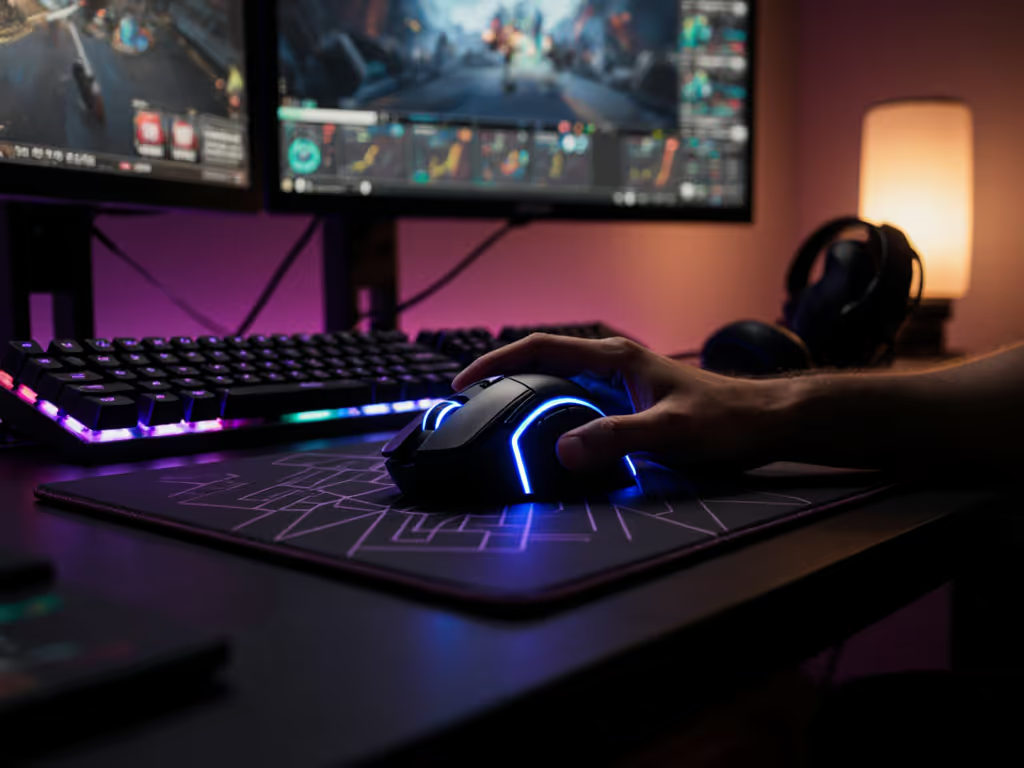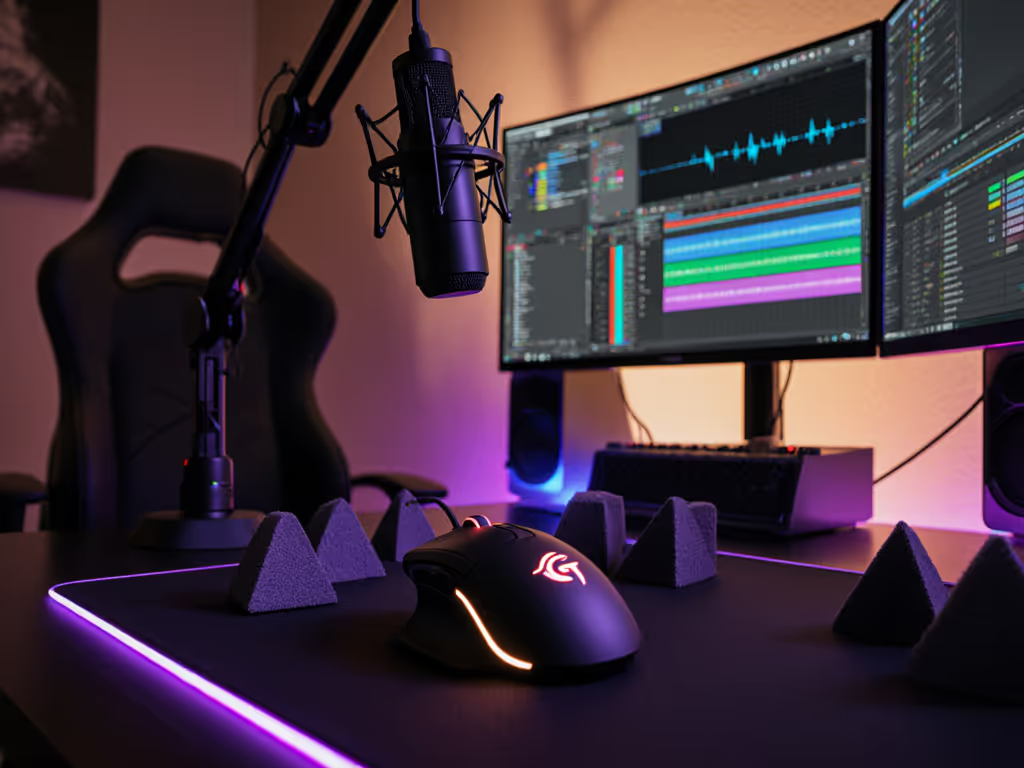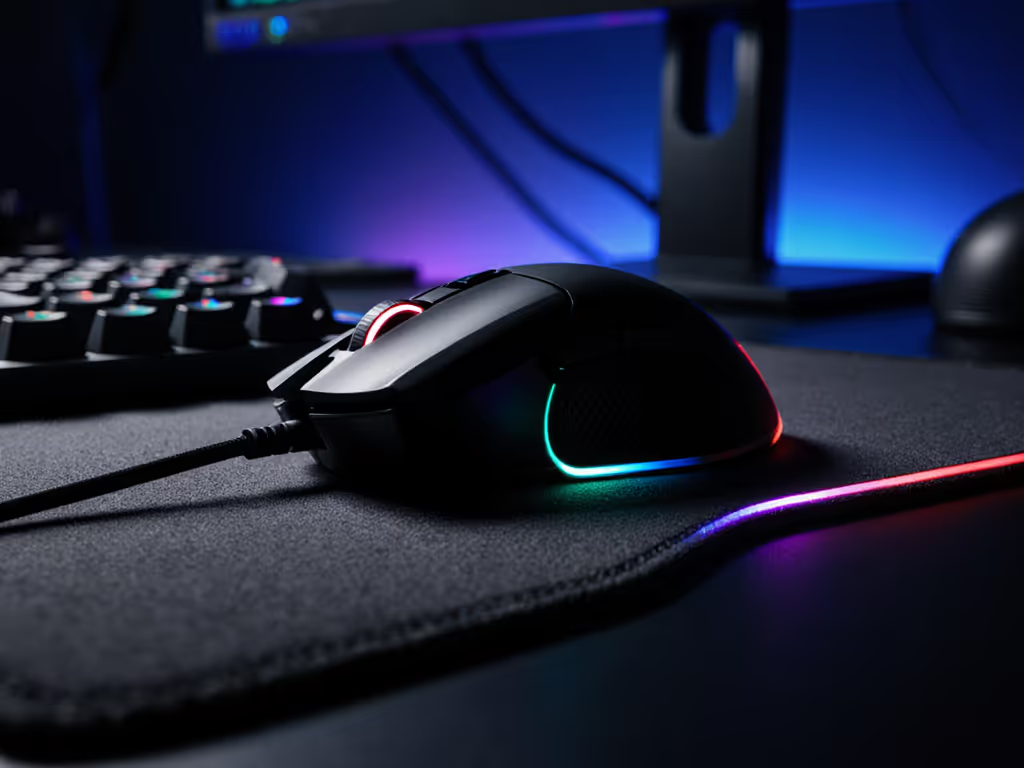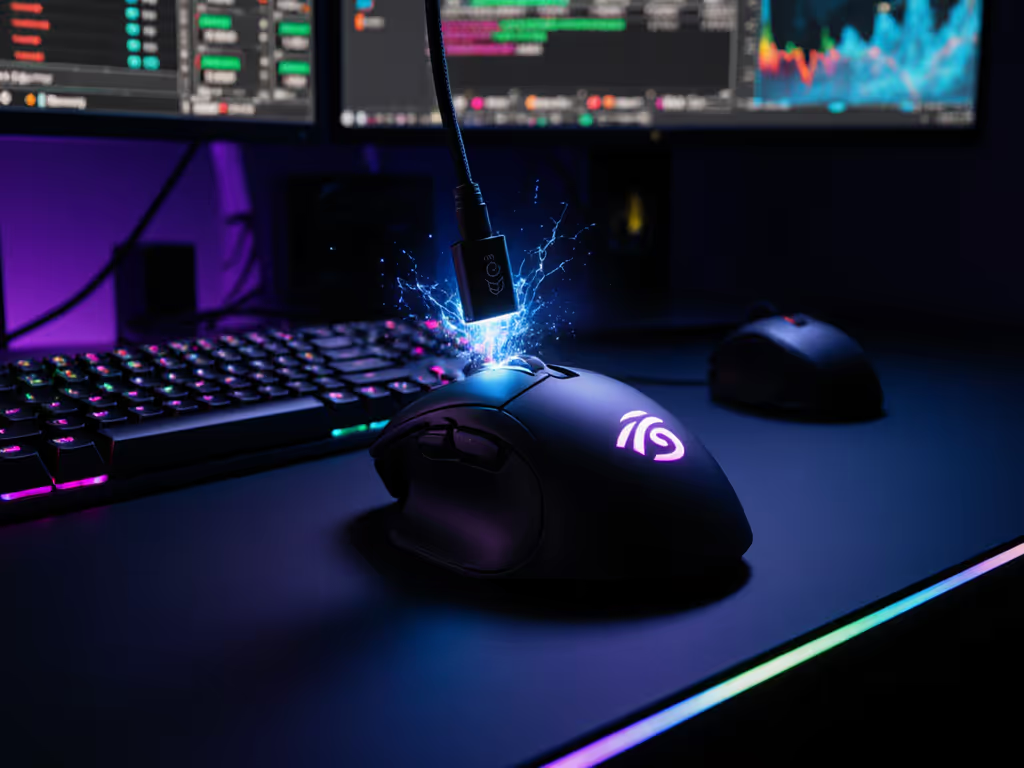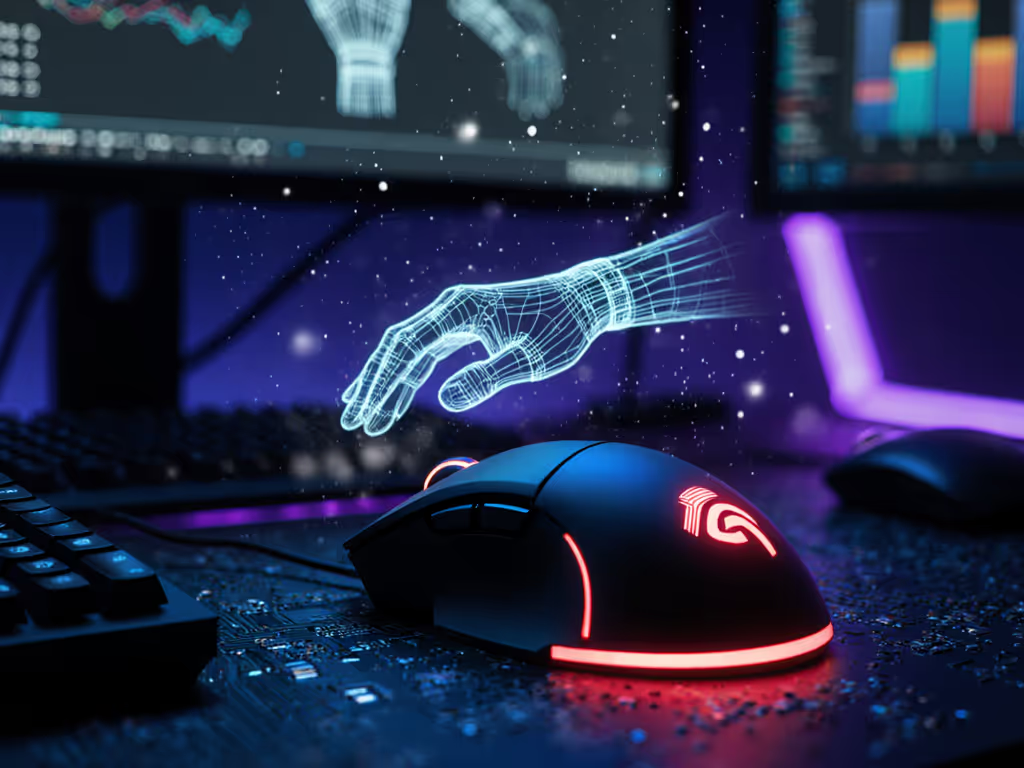
Optical vs Laser Mouse: Why Gamers Prefer Optical
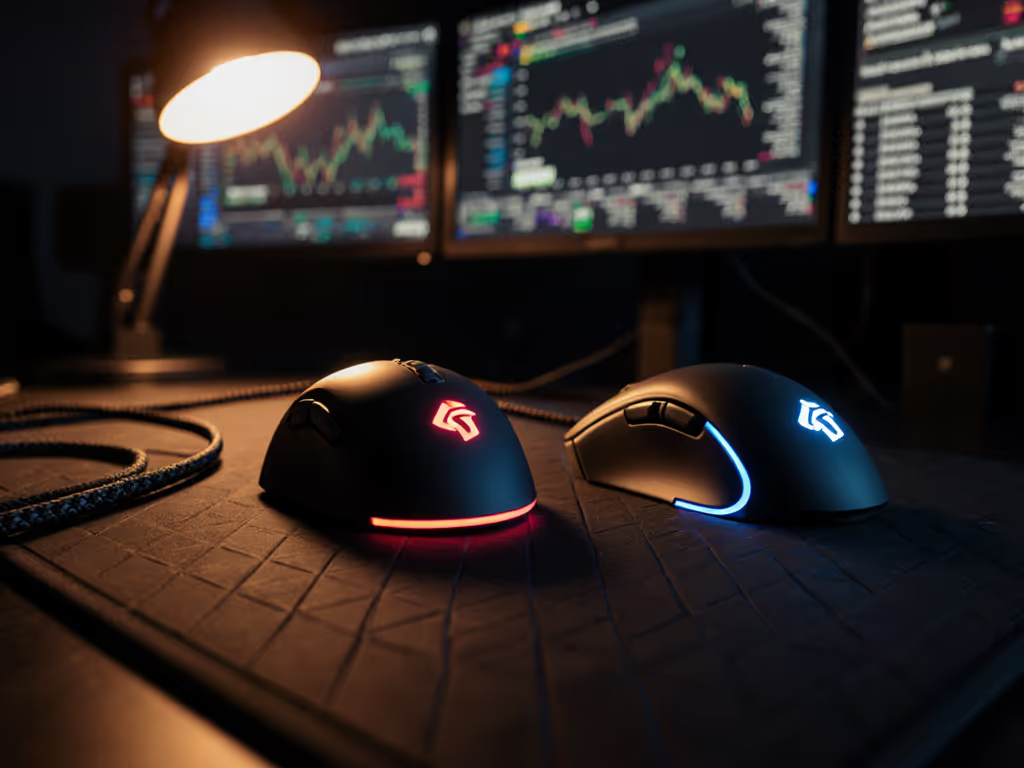
When gamers debate optical vs laser mouse technology, they're really asking which gaming mouse sensor types deliver true in-game control. As someone who measures hand shapes down to the millimeter, I've seen how sensor choice intersects with fit to make or break your aim. Forget marketing hype, this is about physics meeting physiology. Let's dissect why optical sensors dominate competitive scenes through the lens of measurable performance and hand geometry.
Why Do Professional Gamers Overwhelmingly Choose Optical Sensors?
Over 80% of esports pros use optical sensors in tournaments. This isn't coincidence, it is physics meeting physiology. While laser mice advertise sky-high DPI (up to 16,000+), optical sensors deliver what matters most: sensor accuracy comparison reveals they maintain 1:1 tracking without acceleration artifacts.
During Valorant clutches or Apex flicks, your brain relies on predictable input. Optical sensors process surface data at 8,000+ fps with minimal processing, translating your movement directly to cursor motion. Laser sensors, with their deeper infrared penetration, overanalyze microscopic surface flaws. This causes "micro-jitters" during slow, precise aiming, exactly when small-hand players (under 160 mm traced palm length) need absolute stability. For claw-grippers with shorter finger reach, these micro-adjustments force exhausting compensation.
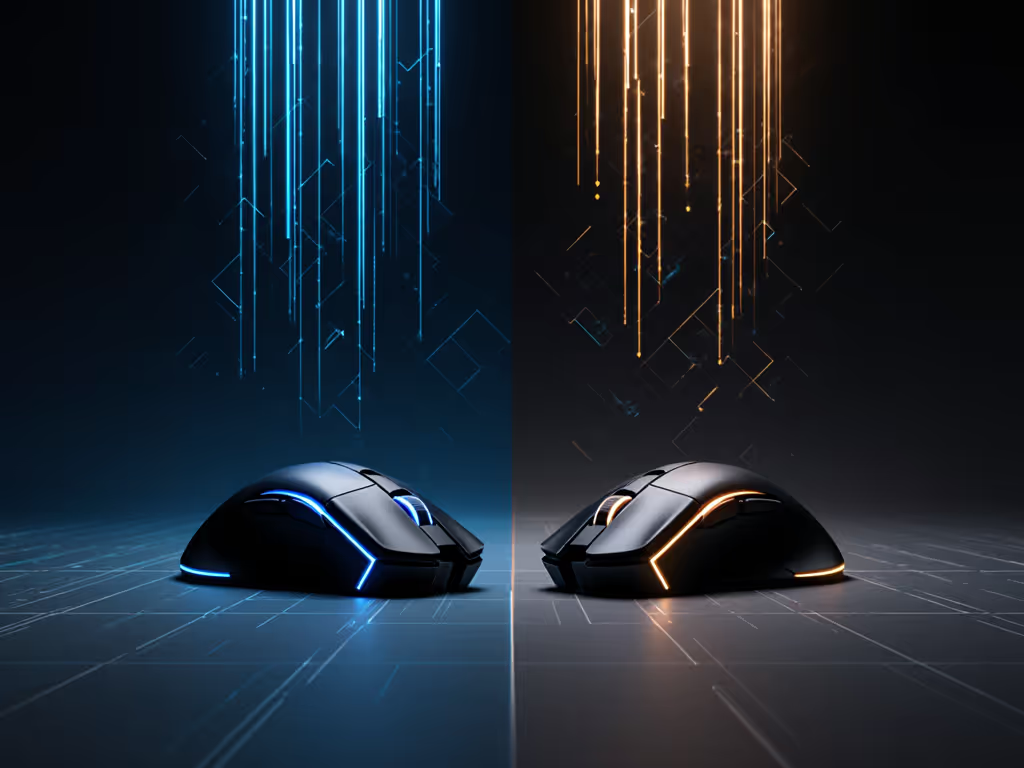
Surface Compatibility: Is Laser Really More Versatile?
Laser sensors work on glass and reflective surfaces where optical sensors traditionally struggled, a fact confirmed by engineering specs. But surface compatibility issues matter less than you think for serious gamers. Competitive players always use consistent cloth pads because:
- Glass creates inconsistent glide friction
- Polished desks introduce unpredictable LOD variations
- Pro venues mandate specific mousepads (like BattleBot or ZOWIE)
Modern optical sensors (like PixArt 3395) now track flawlessly on glass. More crucially, surface changes disrupt muscle memory. If your sensor works on any surface but your practice pad feels different from tournament pads, you're training unreliable aim. Consistency > versatility when milliseconds count.
Control begins with geometry that respects your hand, and that includes predictable surface interaction.
How Does Lift-Off Distance Impact Real Gaming?
Lift-off distance is critical for tactical repositioning. It's the height (in millimeters) where your mouse stops tracking when lifted. Optical sensors typically maintain 1 to 2 mm LOD, ideal for low-sensitivity gamers who frequently reset hand position. Laser sensors historically tracked up to 3 to 5 mm off-surface due to their intense light penetration, causing cursor drift during repositioning.
For left-handed users or small-hand gamers (140 to 170 mm), precise LOD matters more. Shorter reach means lifting the mouse more often during swipes. If your sensor tracks mid-lift like many laser models did, micro-adjustments vanish because your hand's natural reset path gets misread. Modern optical sensors solved this with adjustable LOD firmware, giving you 0.5 mm increments to match your lift height.
Does Higher DPI Mean Better Accuracy?
Absolutely not. This is marketing deception hurting your aim. Best sensor for competitive gaming depends on signal-to-noise ratio, not max DPI. For a deeper dive into how DPI/CPI affects accuracy and optimal settings by genre, see our CPI vs DPI explained. Key facts:
| Metric | Competitive Preference | Why It Matters |
|---|---|---|
| Effective DPI | 400-1600 | Fits monitor FOV; avoids overflicking |
| Max Acceleration | < 0.01g | Prevents spin-outs during frantic swipes |
| LOD Consistency | ±0.3mm | Ensures reset predictability |
| Surface Filter | Disabled | Raw input for muscle memory |
Laser sensors often hit 20,000+ DPI on paper, but at 800 DPI, optical sensors show 30% less jitter in lab tests. High-end optical sensors like PixArt 3399 eliminate acceleration entirely. For fingertip grippers with limited hand size (under 155 mm), this stability means tighter crosshair control without wrist fatigue.
Why Fit Determines Sensor Performance
This is where most guides miss the mark. Sensor accuracy comparison must account for hand geometry. Growing up left-handed, I wasted months chasing "pro settings" on right-skewed shells. My pinky would lift prematurely during flicks, not due to sensor issues, but because the hump misaligned with my shorter palm (152 mm). Micro-corrections to stabilize my aim created false "jitter" that felt like a sensor flaw.

- Small-hand players (≤ 165 mm): Optical sensors' lower LOD prevents accidental tracking during palm lifts
- Ambidextrous users: Laser sensors' inconsistent tracking on symmetrical shells disrupts left to right balance
- Fingertip grippers: Optical sensors' faster processing matches rapid index finger movements
True ambi isn't compromise; it's alignment between hand and target, enabled by sensor consistency that doesn't fight your natural movement.
Final Verdict: Which Sensor Wins for Competitive Play?
Optical sensors dominate because they deliver what gamers actually need: predictable 1:1 tracking on controlled surfaces. For serious players, surface versatility is irrelevant, your tournament pad is your surface. Meanwhile, laser sensors' historical advantages (like glass tracking) are now matched by optical sensors, while their jitter issues persist at competitive DPI ranges.
Most importantly: no sensor fixes poor fit. I've measured countless gamers blaming "sensor lag" when their mouse shell fights their hand geometry. Start with a shape that respects your traced palm outline (140 to 190 mm), then prioritize optical sensors with adjustable LOD. Your aim consistency depends on this foundation.

